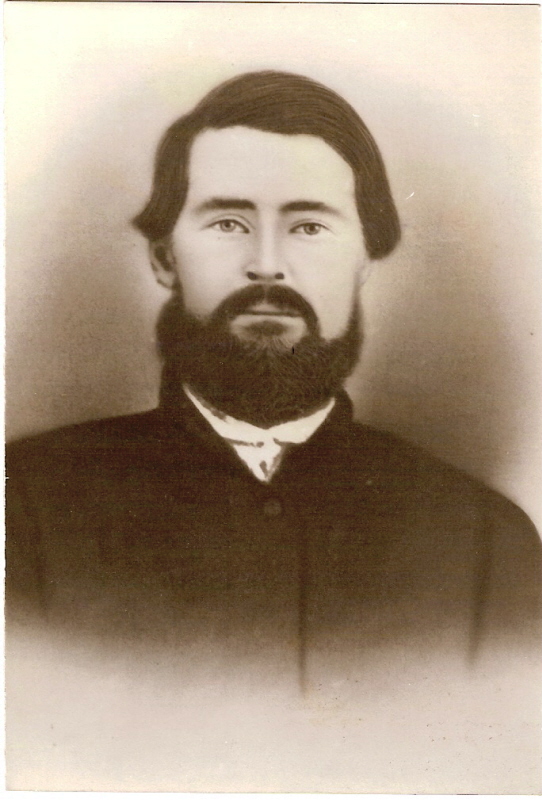Cpl., 23rd Iowa Infantry
Gunshot wound casualty
1824-1863
William Hogue was born on April 3, 1824 in Vigo County, Indiana, probably in Terra Haute. Not too much is known of his childhood. William, according to “family lore” was in the Mexican War in 1846 to 1846, and, evidently married right after that, on August 17, 1846 to Hetty Ann Moore in Terra Haute, Indiana. They had seven children before the start of the Civil War and had moved to Washington Township, Wayne County, Iowa in 1850.
He was 38 when he enlisted as a Volunteer on July 26, 1862 and was residing in Corydon, Iowa at the time. He was promoted to Seventh Corporal (probably because of previous service) on October 12, 1862, to Fifth Corporal on March 20, 1863 and to Fourth Corporal on April 11, 1863. It is reported that he was elected the first judge (Trustee) in Washington Township. His Company was Company D, 23rd Iowa Infantry. They were mustered into service on August 23, 1962 and had duties on the borders of Missouri and Arkansas in Autumn, 1862 and Winter, 1963.
They began the march from there on February 9, 1863, marching through Thomasville and Eminence to Iron Mountain, Missouri. After about three weeks, upon receiving orders to join the Army of General U. S. Grant, they marched through St. Genevieve, Missouri to Milliken’s Bend, Louisiana on the Mississippi River. The troops of the 23rd Infantry were then assimilated into the Thirteenth Army Corp, commanded by Major General John A. McClernand as preparations were made to commence Grant’s campaign against Vicksburg, Mississippi.
The 23rd Iowa was assigned to the Second Brigade of the Fourteenth Division of the Thirteenth Army Corps. Brigadier General Eugene Carr commanded this Brigade. Gunboats bombarded the Confederates’ positions for several hours on April 29, 1963 but with little success. The troops were transported down the river from Milliken’s Bend to 16 miles below Grand Gulf. From here on April 30 they marched toward Port Gibson with the 23rd Iowa Infantry leading the advance. The march continued until about 1:00 a.m., May 1st when the advance-guard was fired upon by enemy’s pickets and about 3 miles from Port Gibson skirmishes and exchange of shots between the Union and Rebel batteries occurred. The battle lasted about 3 hours.
It was during this skirmish that our ancestor, William Hogue, received a gunshot wound in the left side with the ball lodging against the backbone. He was taken to a hospital in Grand Gulf, Mississippi, where he died 13 days later, on May 14, 1863. The pain from this wound must have been overwhelming with what little medication they had then to help a patient “handle” such. Thinking thoughts about his wife and seven children he would never see again would have only added to his misery.
Such were the sacrifices our ancestors endured who sacrificed their lives and, often, their fortunes that our States would remain the United States! We have never been able to locate the grave of William Hogue. Many from that war have unnamed graves and perhaps this was so in his case. Following news of his death, his wife, Hetty Ann, and the children moved from Indiana to Merna, Nebraska where she had family.

